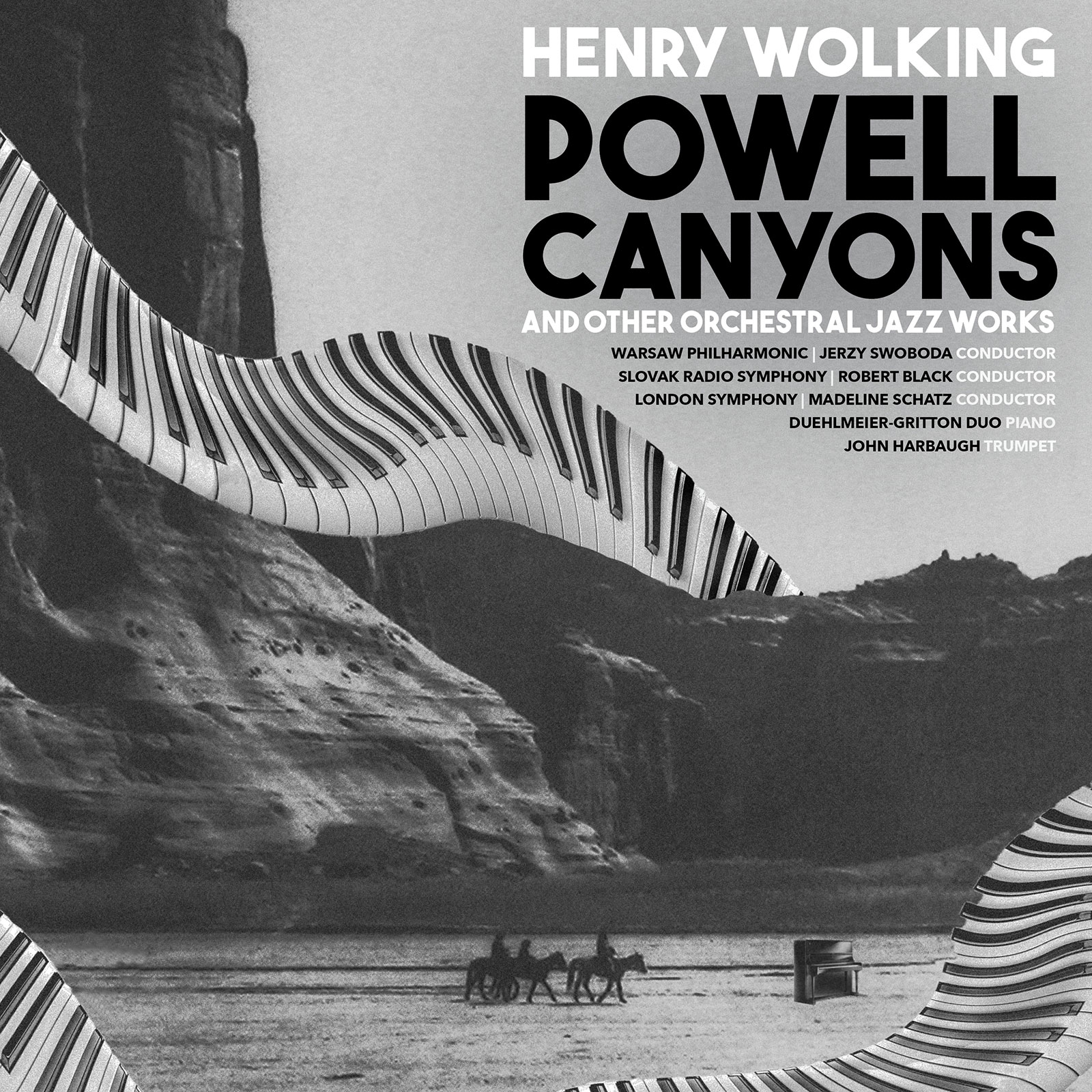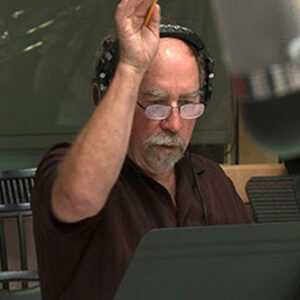
Share Album:
Powell Canyons
Henry Wolking composer
Warsaw Philharmonic | Jerzy Swoboda composer
Slovak Radio Symphony | Robert Black conductor
London Symphony | Madeline Schatz conductor
Duehlmeier-Gritton Duo piano
John Harbaugh trumpet
Renowned Nevada-based Floridian composer, author, and teacher, Henry Wolking follows up his recent and miraculous IN SEA, with a Big Round Records re-release of POWELL CANYONS: AND OTHER ORCHESTRAL JAZZ WORKS. First released in 2000 by MMC Recordings, this stunning and effervescent album of orchestral jazz compositions is a quintessential key to understanding Wolking’s work and nature inspired aesthetic.
Featuring the London Symphony Orchestra, Warsaw National Philharmonic, the Slovak Radio Symphony, as well as collaborations with trumpeter, John Harbaugh, and Steinway artists, Susan Duehlmeier and Bonnie Gritton, Powell Canyons peaks in height and leaps into the depths for a seismic listening experience.
This earthly intensity is particularly felt in the Slovak Radio Symphony’s rendering of “Forests,” a piece that flourishes like a pine in winter and a maple in summer light. Conductor Robert Black leads these phosphorescent movements along with immaculate precision and feeling.
POWELL CANYONS: AND OTHER ORCHESTRAL JAZZ WORKS is, as Wolking intends, a valley spanning album—celebratory and leaping. Dig up and become a part of this landscape.
Listen
Track Listing & Credits
| # | Title | Composer | Performer | |
|---|---|---|---|---|
| 01 | Powell Canyons: I. Dirty Devil | Henry Wolking | London Symphony Orchestra | Madeline Schatz, conductor; John Harbaugh, trumpet | 5:35 |
| 02 | Powell Canyons: II. Dark Canyon | Henry Wolking | London Symphony Orchestra | Madeline Schatz, conductor; John Harbaugh, trumpet | 6:38 |
| 03 | Powell Canyons: III. White Canyon | Henry Wolking | London Symphony Orchestra | Madeline Schatz, conductor; John Harbaugh, trumpet | 6:37 |
| 04 | Forests | Henry Wolking | Slovak Radio Symphony Orchestra | Robert Black, conductor | 12:08 |
| 05 | Letting Midnight Out on Bail: I. | Henry Wolking | Warsaw Philharmonic Orchestra | Jerzy Swoboda, conductor; Bonnie Gritton & Susan Duehlmeier, piano | 5:24 |
| 06 | Letting Midnight Out on Bail: II. | Henry Wolking | Warsaw Philharmonic Orchestra | Jerzy Swoboda, conductor; Bonnie Gritton & Susan Duehlmeier, piano | 9:24 |
| 07 | Letting Midnight Out on Bail: III. | Henry Wolking | Warsaw Philharmonic Orchestra | Jerzy Swoboda, conductor; Bonnie Gritton & Susan Duehlmeier, piano | 5:195:19 |
| 08 | Letting Midnight Out on Bail: IV. | Henry Wolking | Warsaw Philharmonic Orchestra | Jerzy Swoboda, conductor; Bonnie Gritton & Susan Duehlmeier, piano | 6:00 |
| 09 | Letting Midnight Out on Bail: V. | Henry Wolking | Warsaw Philharmonic Orchestra | Jerzy Swoboda, conductor; Bonnie Gritton & Susan Duehlmeier, piano | 6:41 |
POWELL CANYONS, for jazz trio & orchestra
Recorded in 1996 at EMI Studios Abbey Road in London, England
Engineering by Simon Rhodes
Producer John Boyden
FORESTS, for orchestra
Recorded in 1992 at Slovak Radio Studios in Bratislava, Slovakia
Engineering by Hubert Geschwandtner
Producer Peter Zagar
LETTING MIDNIGHT OUT ON BAIL, jazz paradigms for 2 pianos & orchestra
Recorded in 1997 at Warsaw National Philharmonic Hall in Warsaw, Poland
Edited by Artur Moniuszko
Producer Andrzej Lupa, Andrzej Sasin
Recorded & edited by Classicord
Technician Zbigniew Fijalkowski
Executive Producers Peter Kelly, Elliott Miles McKinley
Digital Mastering Jonathan Wyner, M Works
Program Notes Jeanne Marie Belfy
Executive Producer Bob Lord
Executive A&R Sam Renshaw
A&R Chris Robinson
Audio Director Jeff LeRoy
Engineering Manager Lucas Paquette
Design & Marketing Director Brett Picknell
Design Ryan Harrison
Artist Information

Henry Wolking
A trombonist and prolific, highly diverse composer who recently retired from The University of Utah's School of Music after nearly 40 years as Director Of Jazz Studies, Henry Wolking has found creative inspiration in writing for almost every imaginable type of large and small ensemble in classical and jazz music. His prodigious orchestral output includes symphonies, fantasies, and an overture as well as eight concertos featuring various soloists such as jazz quartet, trombone, flute, heckelphone, bassoon, contrabassoon, two pianos and horn.
John Harbaugh
John Harbaugh, professor of music at the University of Alaska at Fairbanks, holds the Masters degree from the University of North Texas. He has done postgraduate work at Indiana University, and he was formerly a member of the music faculty at the University of Idaho. He was a featured soloist on the nationally acclaimed Hemet High School Jazz Band’s fourth CD release, which is distributed internationally. A clinician for United Musical Instruments, he has also spent four years as executive producer of the William Adam Trumpet Video Series. He directs the Jazz Program at the University of Alaska, Fairbanks.
Duehlmeier-Gritton Duo
Acclaimed for the color, nuance and drama of their performances, Bonnie Gritton and Susan Duehlmeier have been heard in concert across the United States, Europe, and Israel. Their orchestral performances have included numerous collaborations with the Utah Symphony, as well as with the Warsaw Philharmonic Orchestra, the Boston Pops, the Westminster Chamber Orchestra, the Utah Philharmonia, and the Czech Radio Orchestra. They are listed Steinway artists and have completed an all-Gershwin CD for the Centaur label.
